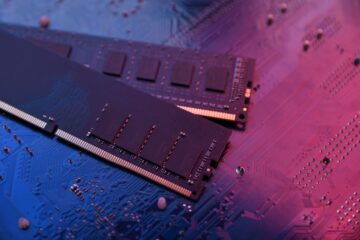How much can data be transmitted at a time over lorawan connection?
In order to serve a variety of large-scale verticals, network operators are beginning to implement horizontal M2M solutions employing Low Power Wide Area Networking (LoRWAN) technology. Many people are using LoRaWAN. It guarantees an omnipresent connection for outdoor IoT applications while maintaining straightforward network architectures and management. Network operators and solution vendors have given this technology a lot of attention lately. Smart cities, metres, on-street lighting control, and precision agriculture are other application fields. Low data rates and reliable modulation are used in LPWAN technologies to achieve a multi-km communication range. A network based on the open LoRaWAN protocol, deployed in a star topology, is ideal for applications that call for long-range or deep in-building communication among a large number of low-power and compact data collection devices.
What is LoRaWAN, and How does it work?
The Internet of Things (IoT) technology’s low-power, long-range radio “talks” to end nodes and vice versa. The wireless communication system offers far more comprehensive coverage than cellular networks thanks to its long-range communication distance, low power consumption, cheap cost, and encrypted data delivery. The physical layer, or wireless modulation, used to establish the long-range communication link is called LoRa, short for Long Range. Using frequency chirps with a linear fluctuation in frequency, LoRa, which is based on chirp spread spectrum technology (CSS), transmits encoded tiny data packets over long distances on top of the LoRaWAN network protocol.
The star-of-stars topology of the LoRaWAN network is used for deployment. The data is relayed between the sensor nodes and the network server by base stations in LoRaWAN networks with a star-of-stars topology. While the connection between the gateways and the central server is handled over a backbone IP-based network, communication between the sensor nodes and the base stations is conducted over a wireless channel using the LoRa physical layer.
An overview of LoRaWAN gateways
An architecture for a LoRa long-distance communication network and a collection of communication protocols are known as LoRaWAN. A LoRa network’s primary components are nodes, gateways, and LoRa network operators (also known as LoRaWAN). Nodes often broadcast data, which gateways take up and send to operator servers for processing. The word “gateway” is frequently used to describe the physical container that houses the IoT device connectivity hardware and application software is a Lora gateway In the case that one LoRaWAN gateway fails, having several ones increases network resilience. Extended latency and smaller packet sizes are sacrificed in favour of LoRaWAN’s ability to fulfil the demand for longer battery life. These gateways allow greater visibility, cost savings, minimal resource inputs, increased safety, and better decision-making by enabling scaling for LoRa IoT devices.
How LoRaWAN data is Transmitted?
Sensors connected to the internet are referred to as end devices in the infographic above. The device conditionally transmits a signal (data packet) to the gateways each time the sensor obtains a reading so they may collect the data. The end device’s data packet arrives from the gateway’s circuitry in “chirps,” or symbols for digital information (like below). After the chirp has been reduced to the frequency domain, a modulated signal is used to transfer data effectively. The Chirp Spread Spectrum technique is now used at the gateway to transport data to the server as quickly as possible using FSK (Frequency Shift Keying) (CSS).
Digital bytes are used for the transmission of LoRaWAN data. The realistic limit for dependable data payload transfers under various circumstances is 100 bytes. Although it is feasible to go beyond, 100 bytes is a practical working limit. With 100-byte messages being transmitted every 7 seconds over a prolonged time, LoRaWAN networks have successfully undergone testing. In actuality, sending more frequently than once per minute is not advised. A single gateway is capable of supporting thousands of LoRa nodes at once.
Conclusion
A single Lora Gateway, according to LoRaWAN, can gather data from thousands of nodes placed kilometres apart, with a maximum raw data rate of 27 kbps (50 kbps when utilising FSK instead of LoRa). Some solution providers and network operators have developed a significant momentum behind LoRaWAN as a result of these features, to the point where competing technologies occasionally overtake it. LoRaWAN is ideal for both urban and rural applications because of its long range. LoRaWAN is best suited for battery-powered devices since it consumes less power. Since LoRaWAN provides low bandwidth communication, it is suitable for real-world IoT deployments that require fewer data. Implementation expenses are frequently lower since fewer Lora Gateway devices are needed than with mobile or WiFi.










